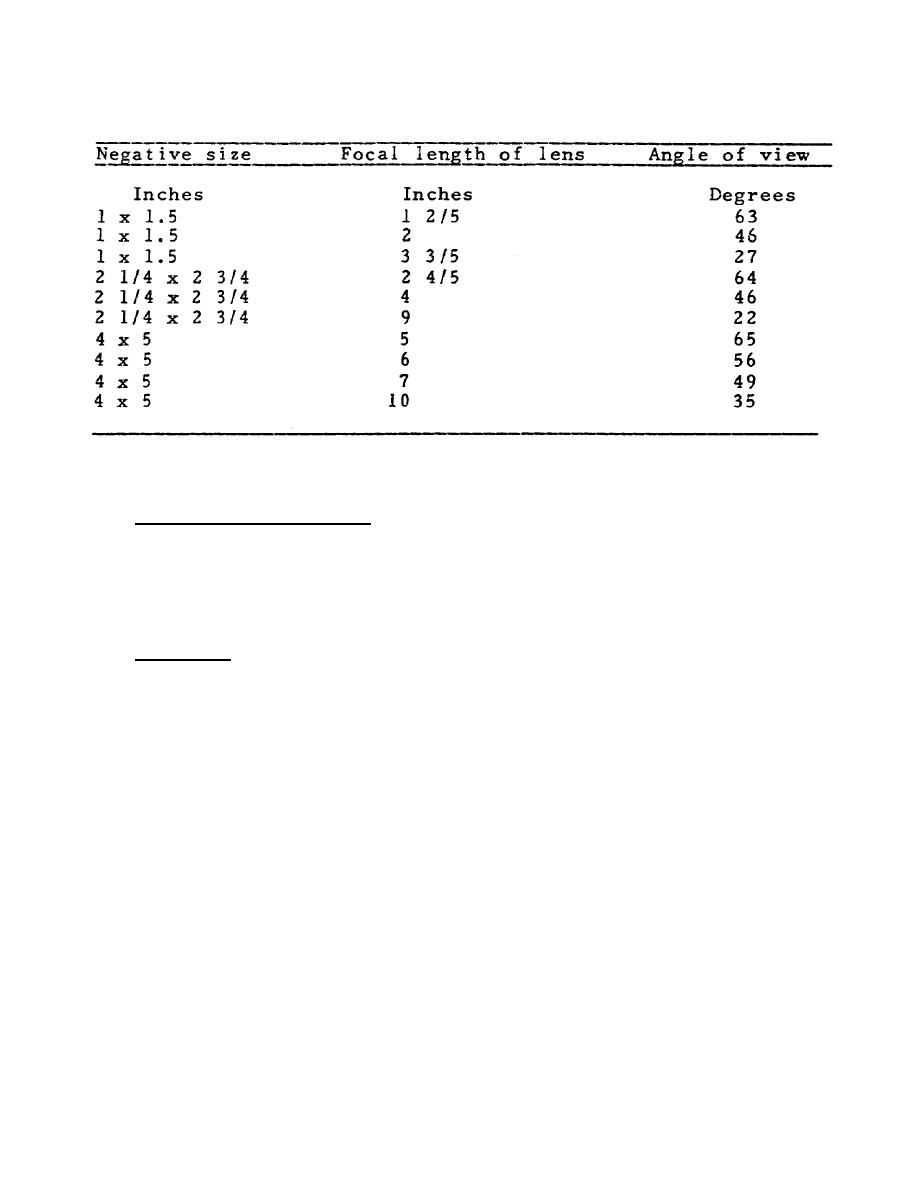
c. Angles of view for still camera lenses are shown in table 2-2 and
apply to lenses focused at infinity.
Table 2-2.
Angles of view of still camera lenses.
2-11. ILLUMINATION OF NEGATIVE.
To be uniform, a negative must receive even
illumination from a lens. If the margins receive less light than the center, a
vignetting effect results. Actually, this effect is so insignificant that it
is not obvious at ordinary angles of view. Nevertheless, the vignetting effect
is produced by all lenses. When a lens with an angle of view of 900 or more is
used, the vignetting effect becomes noticeable.
2-12. IMAGE SIZE.
a. If the subject distance remains constant, the focal length of a lens
controls the size of an image on the film.
A short focal length lens has a
wide angle of view and produces, without changing the negative size, a smaller
image than a long focal length lens.
When two lenses of different focal
lengths are used with the same film size, the lens with the longer focal length
includes less of the subject area.
However, any subject detail in that area
appears larger than it would if photographed with a shorter focal length lens,
(fig 2-18).
97



 Previous Page
Previous Page
